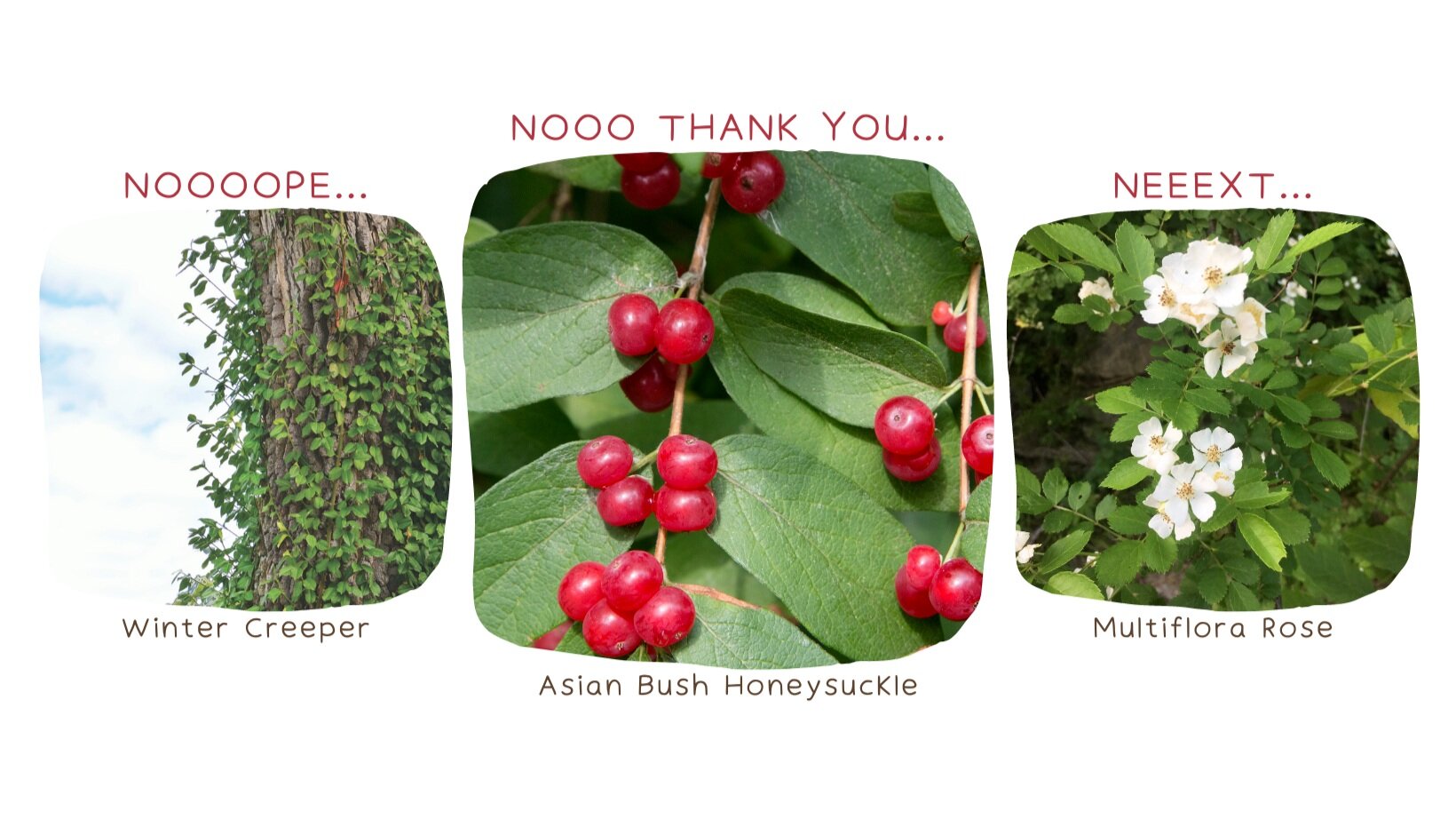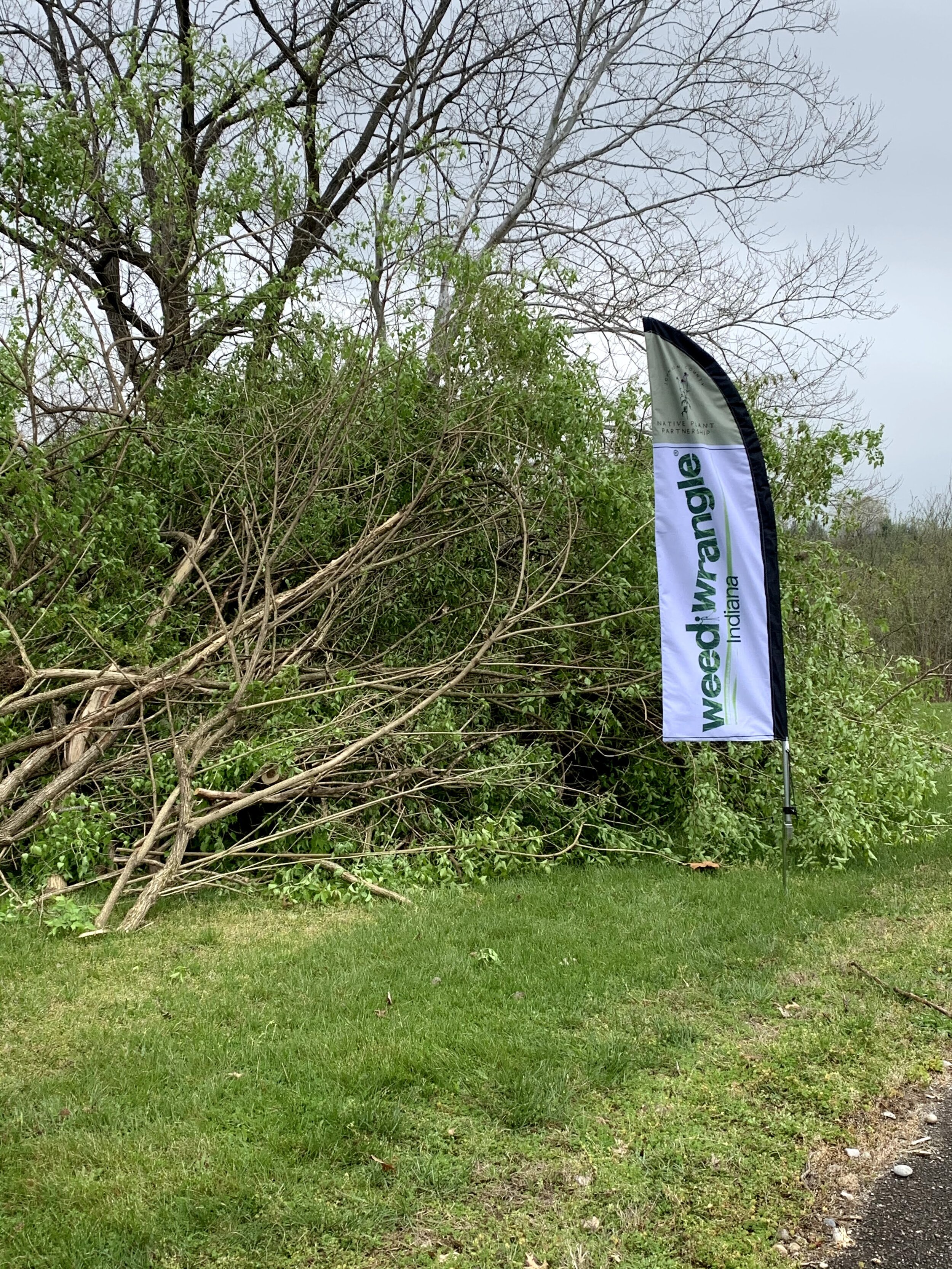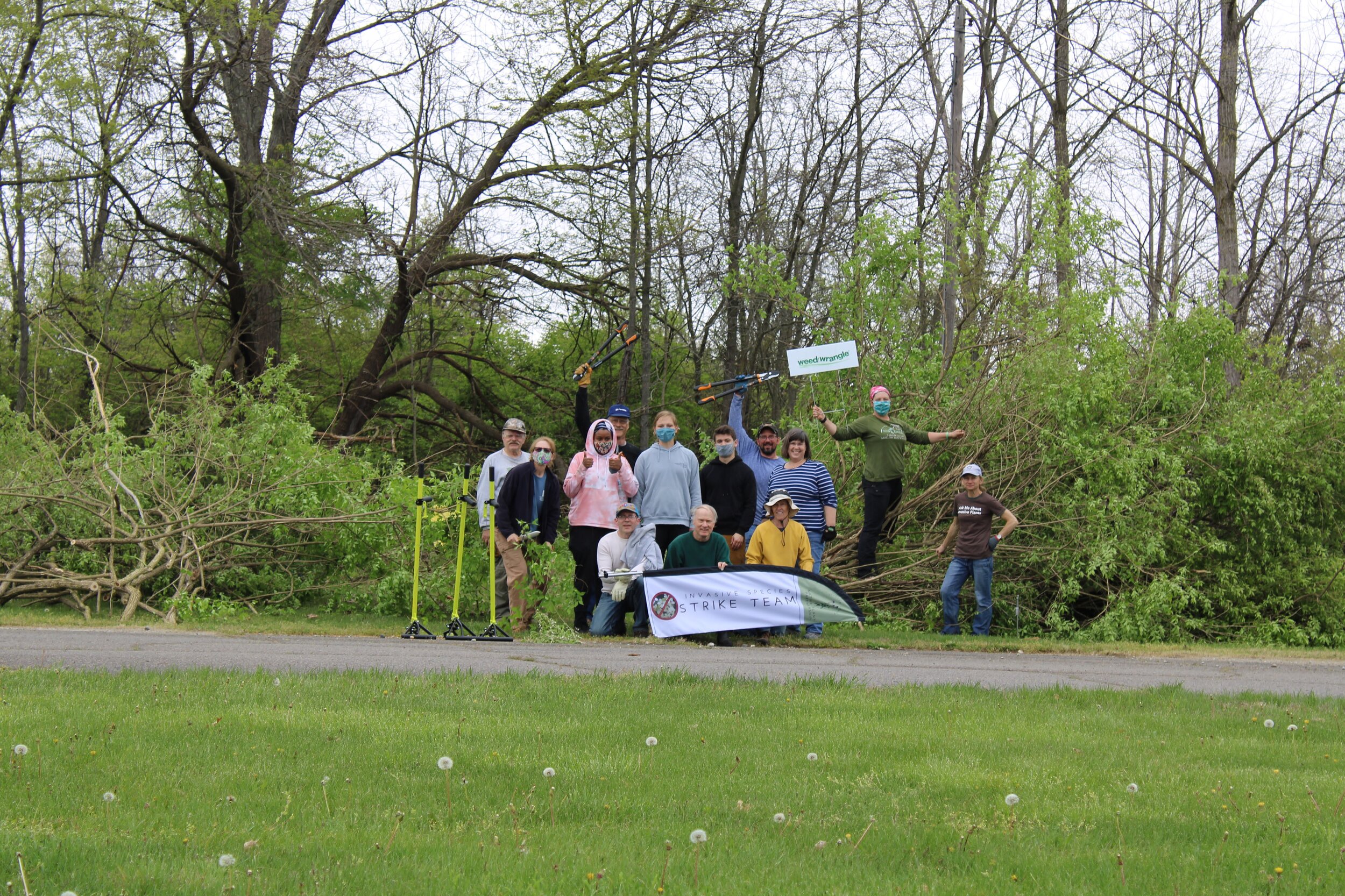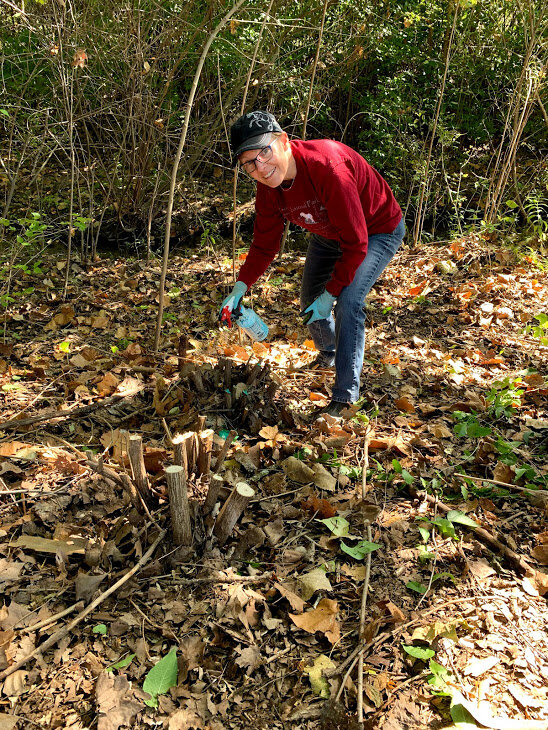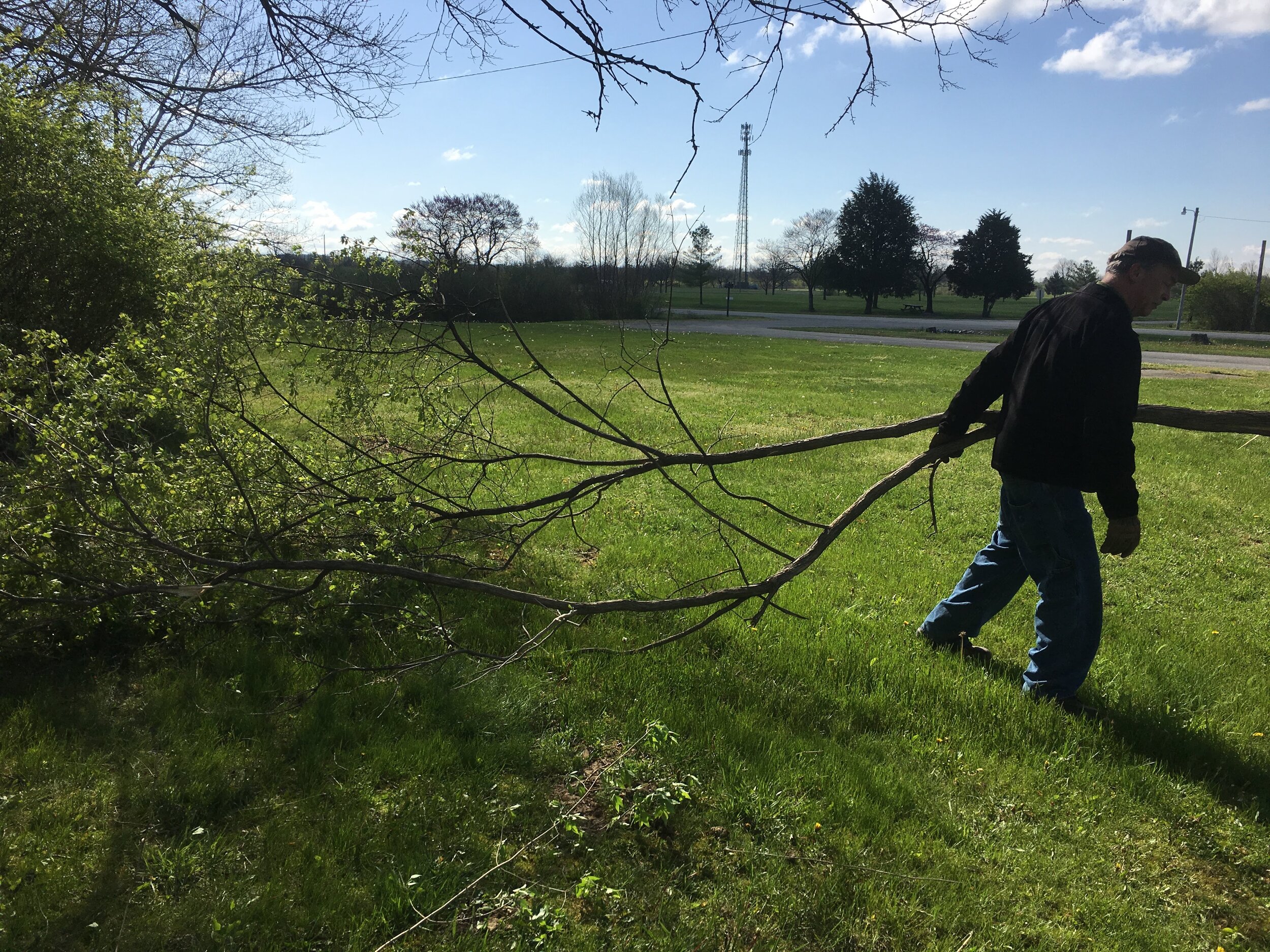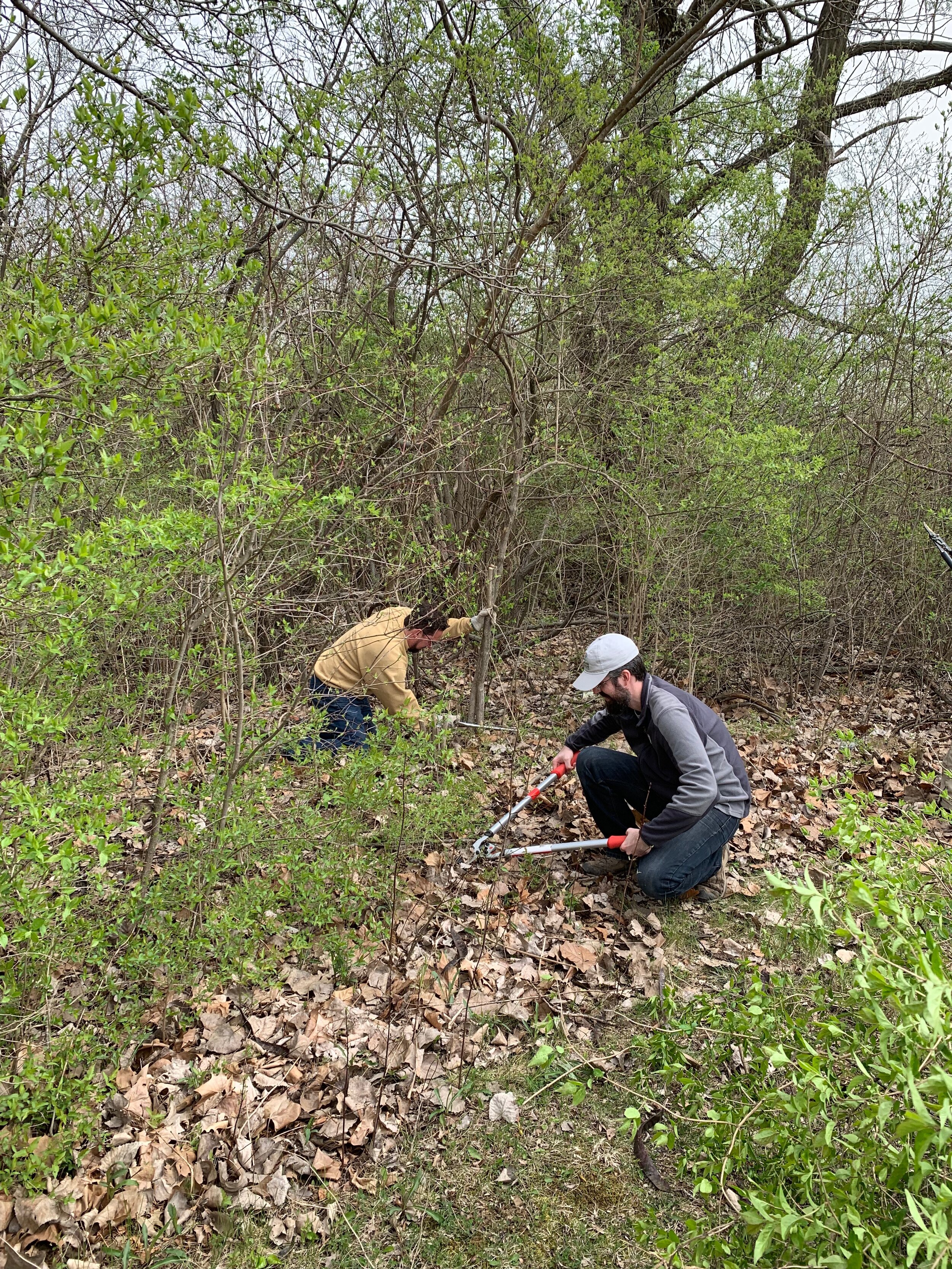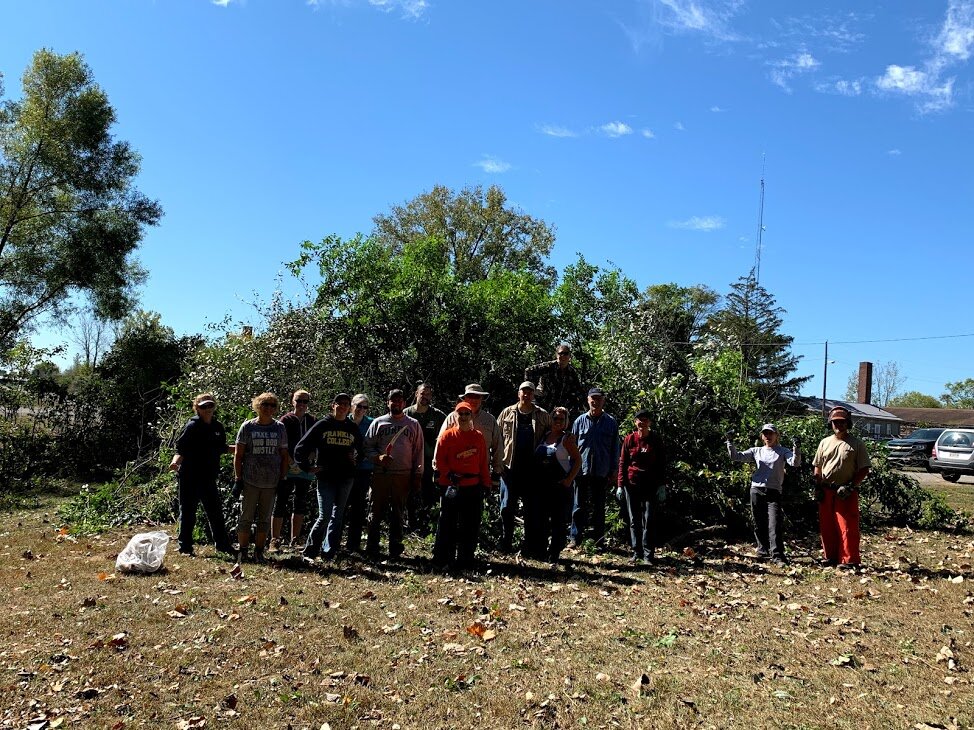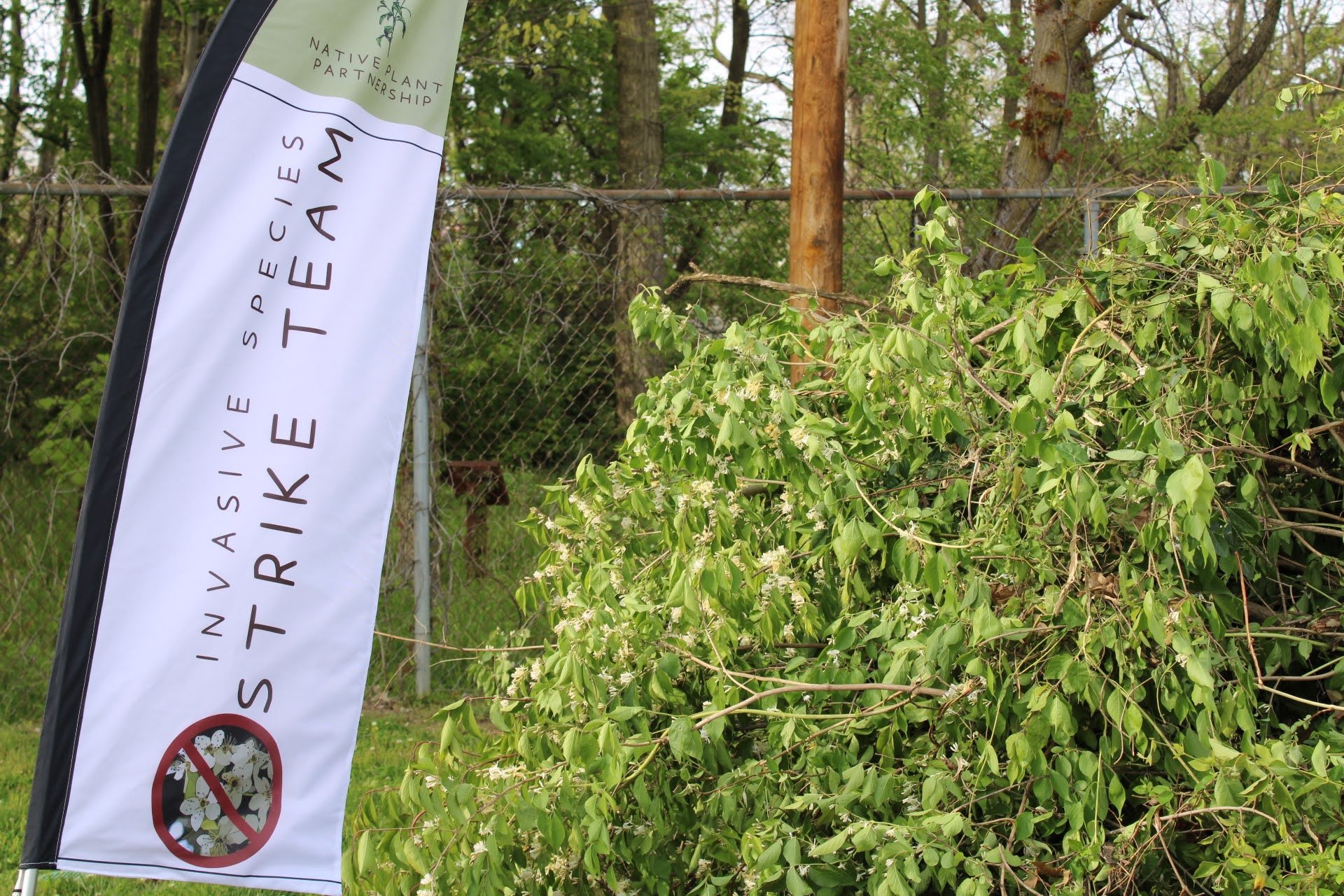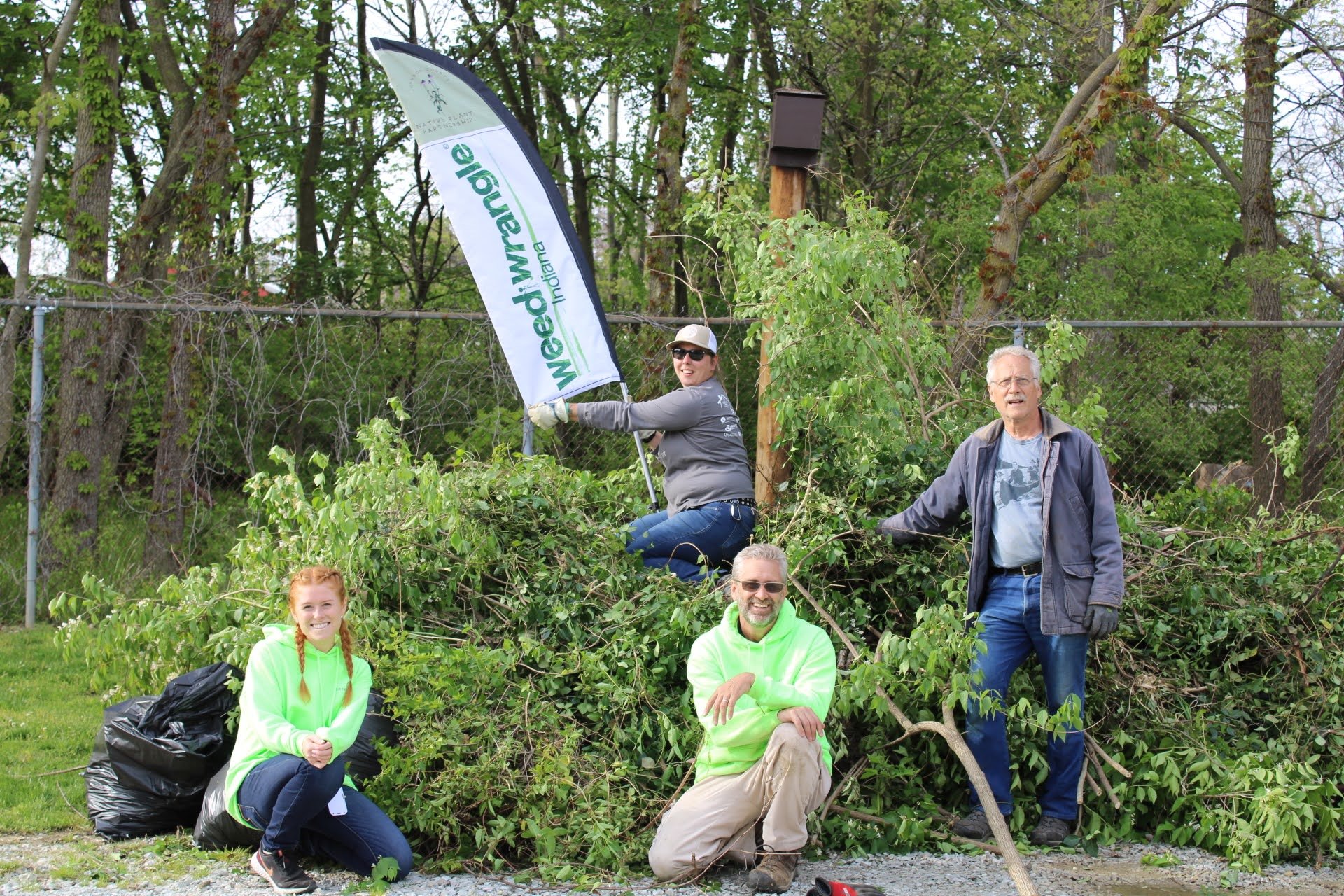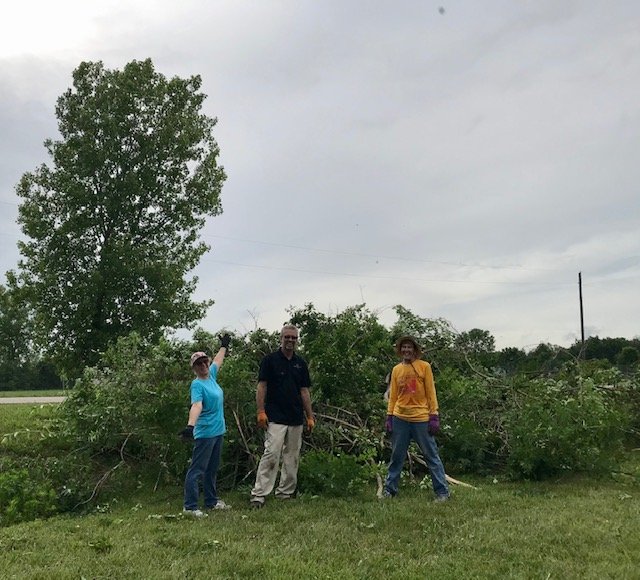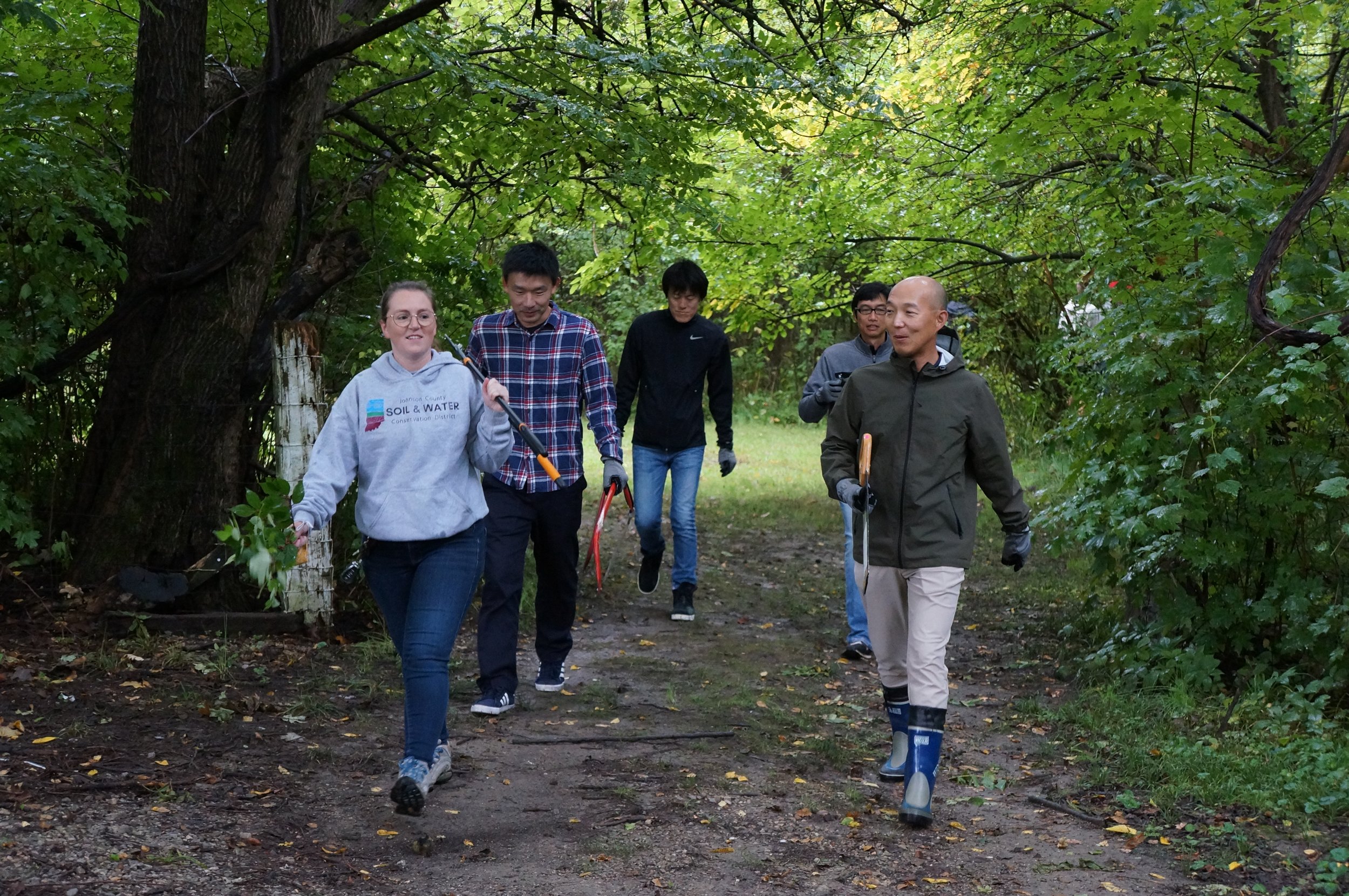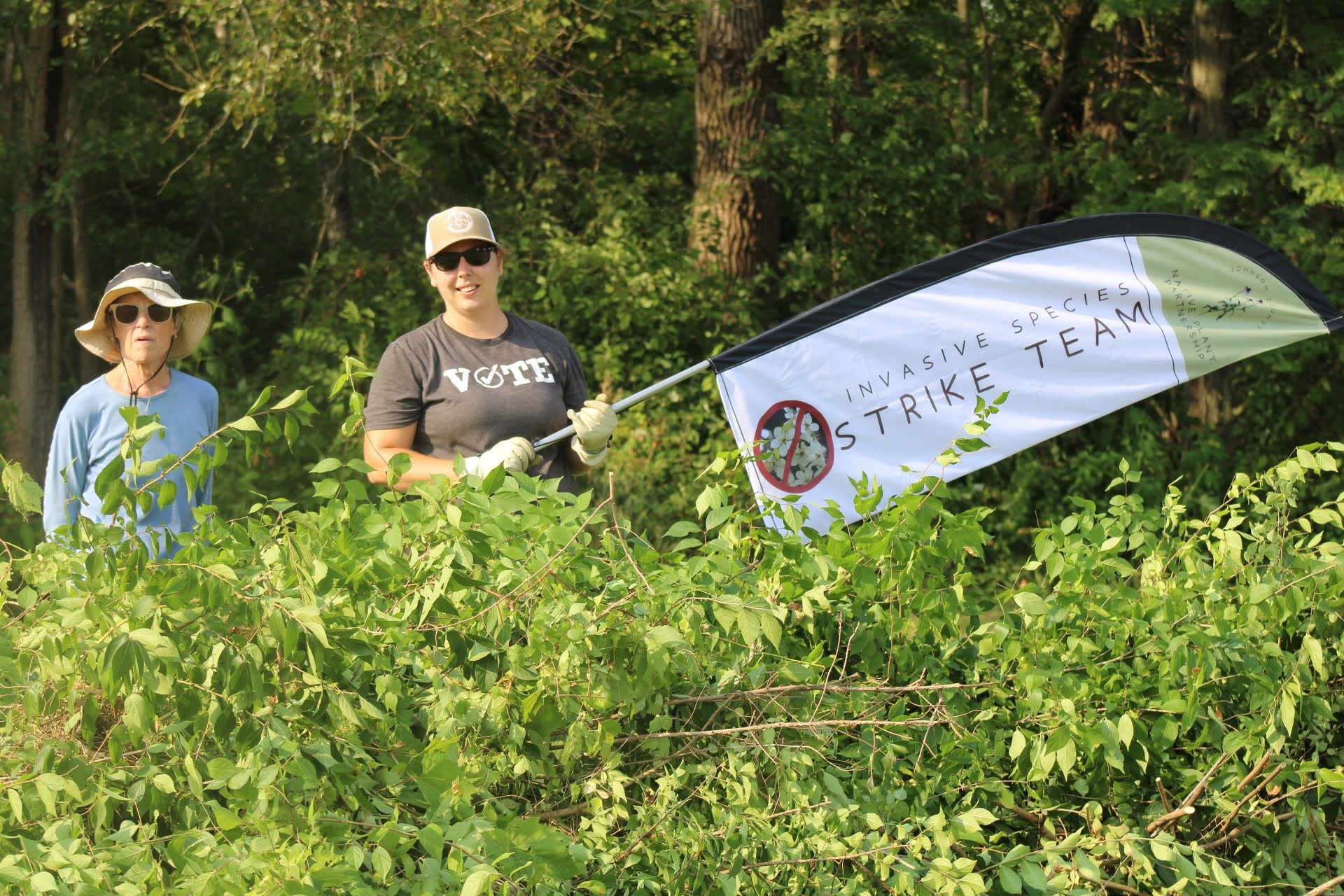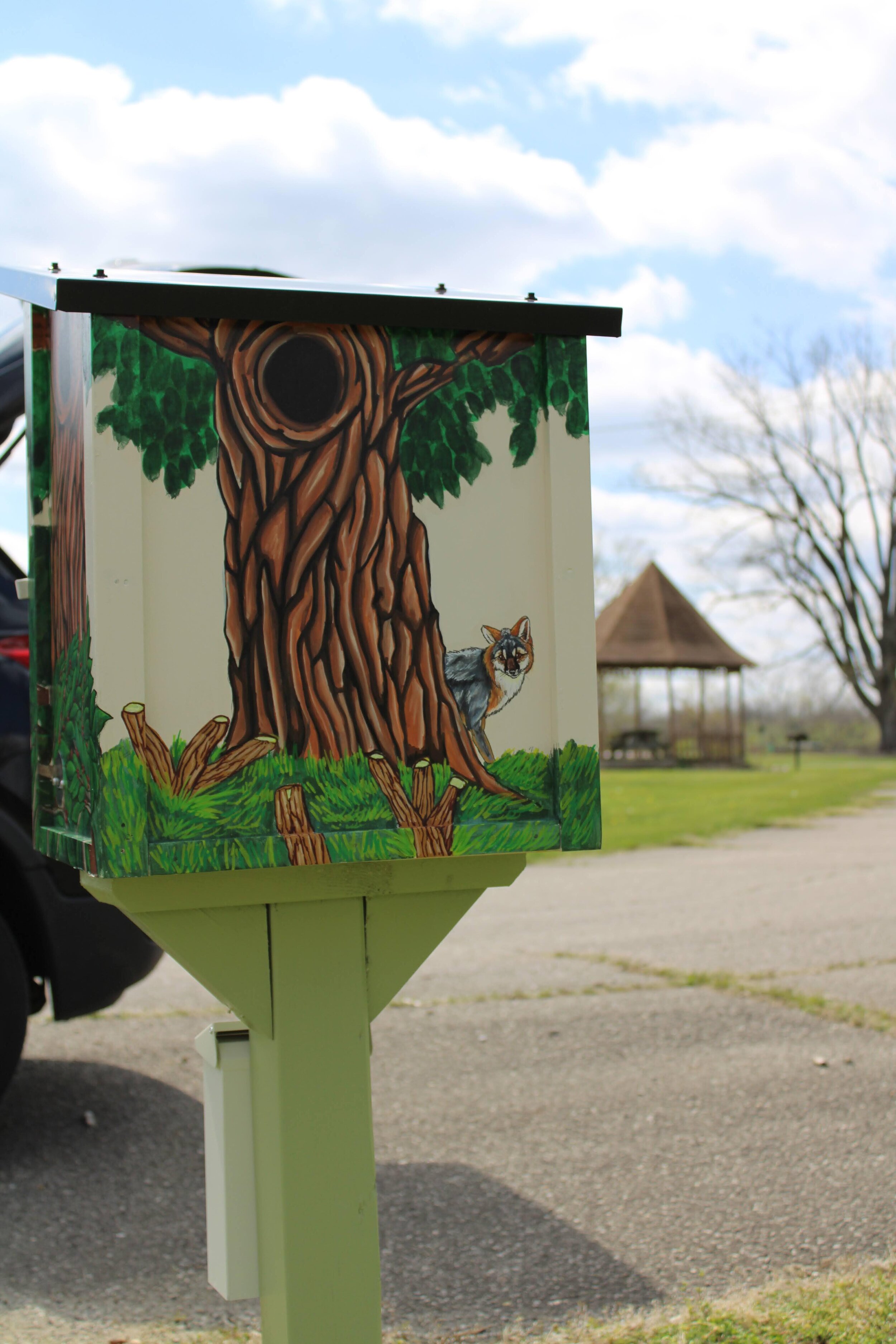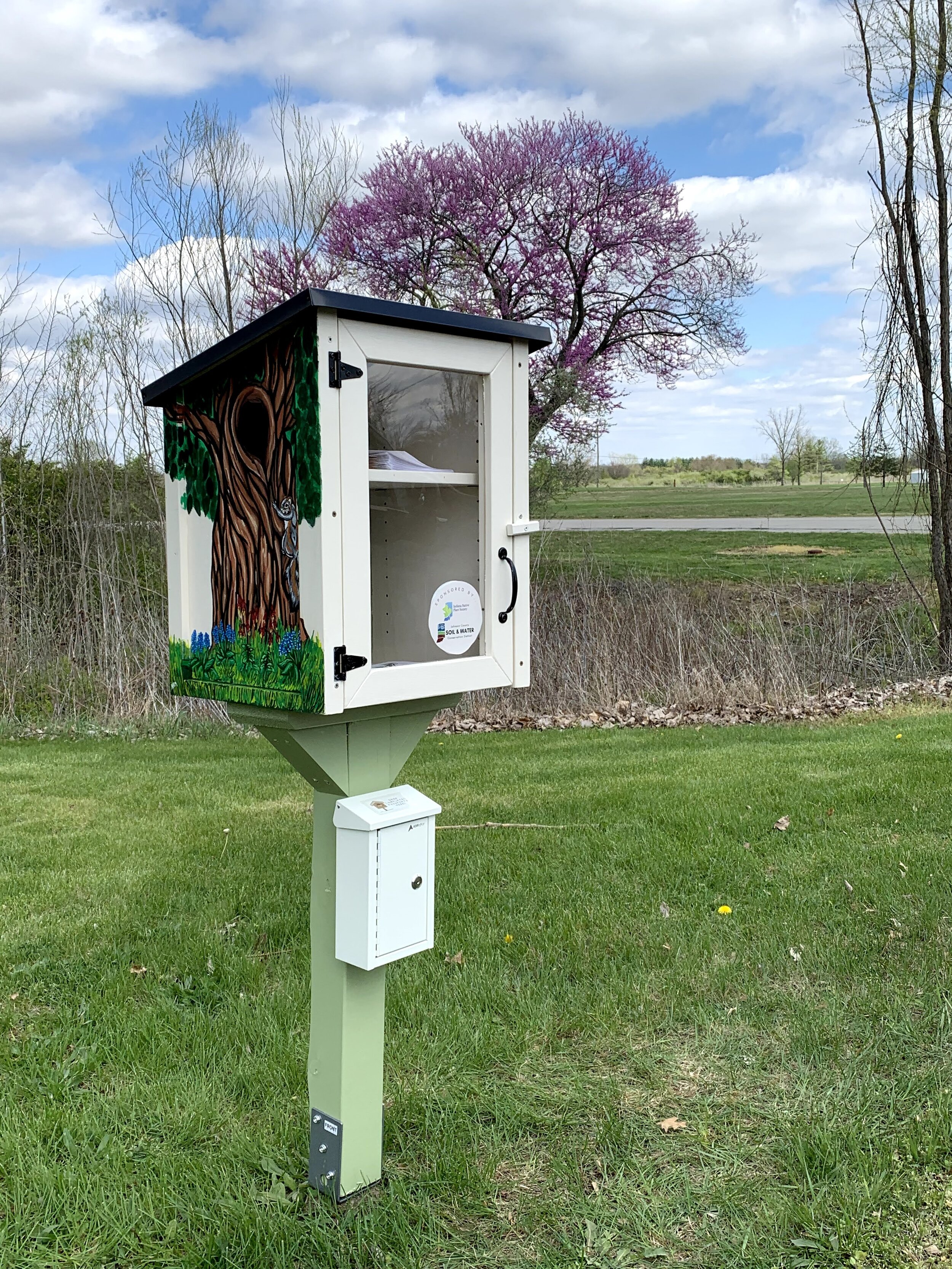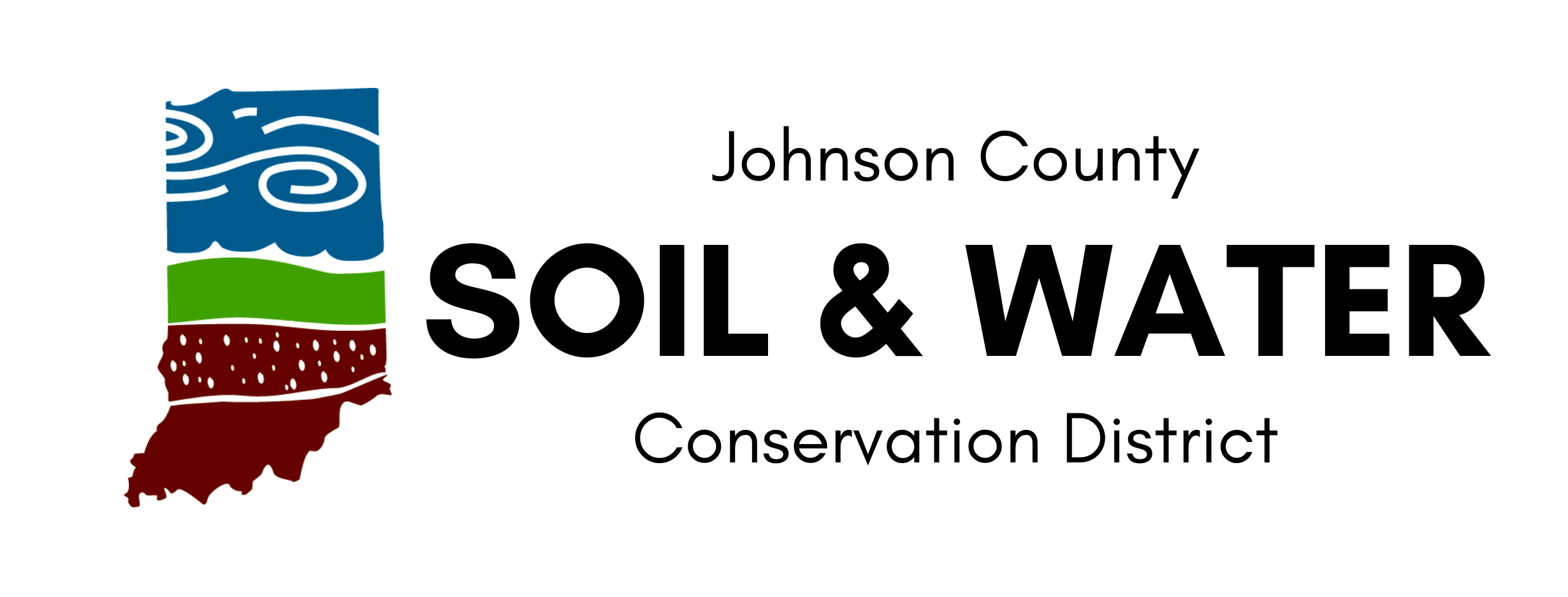Welcome to Johnson County Park!
This library focuses on the impact of invasive species on our native habitats! We know this Little Native Seed Library site doesn’t look like much but right now it’s in the process of being managed to remove invasive species to restore native habitat
These are just a few of the species that are invading our forest and native ecosystems…
So, what exactly is an invasive species you ask? These species are any non-native (that part is key) species that causes harm economically, to human health, or to our native environment. We are going to focus on that last one cause, you know, that’s kind of the whole point of this trail.
These non native invasive species are able to outcompete our native species and quickly become monocultures within an area. Monocultures are areas that primarily consist of one species that dominates the other species attempting to grow. They steal the sunlight (dramatic, right?) and shade out an area by not allowing any sunlight to reach native plants underneath. This means that they take away food and shelter for native wildlife.
Why Callery Pears Stink… But like, actually for reals stink
Sure, these trees are pretty and we all get caught up in thinking they are great because if the Pear Trees are blooming (and they are usually the first thing to bloom) then oh my gosh it’s spring! BUT, here are some reasons why that excitement is misplaced…
First of all, like previously stated, these trees smell HORRIBLE! We’ve all been walking down the street or driving with the windows down during late March or early April and then BAM! What on earth is that smell?! Well, it could definitely be a Pear Tree. They are primarily fly pollinated so that is why they give off the smell of rotting meat and, honestly, it’s not our favorite
Next, while they are attractive as street trees or in a yard, they are not up to the task of being a good street tree or tree for your yard. They do not have the structure to withstand this crazy Indiana weather we all deal with on the daily which makes them extremely prone to splitting. This may lead to property damage or worse
Most importantly, these trees are invading our native forests and basically everywhere. Like look around when they are blooming and they are seriously EVERYWHERE! They do not support native species because unlike Oak trees (that support over 550 caterpillar species) these trees support at most three different caterpillar species which takes away food from native bird species (rude). They are also rude to our native bird species cause their berries are basically bird fast food. The berries are heavy on the carbs and low on the fat content
Did we mention that they smell terrible? Okay, cool. We just wanted to double check.
More non native invasive species to keep an eye out for…
What You Can Do…
Do Not Purchase Non Native Invasive Plants
While the Terrestrial Plant Rule (a rule recently put in place to prevent the sale of invasive species in the state of Indiana) covers a lot of the harmful non native species that we see along the roadsides and invading our forests from being sold, a few are not yet on the list like Callery Pear & Burning Bush so try to double check before purchasing
Remove Invasive Species on Your Property & Grow Native Plants Instead
This can be A LOT of work but it’s definitely rewarding to see all of that hard, yard work benefit native wildlife and pollinators. You will be giving native song birds better nesting areas by removing and replacing non native shrubs. Invasive species are known for higher predation rates of nests due to their shape & structure
Attend a Weed Wrangle to Sharpen those ID Skills
All of this can be a little (or a lot) overwhelming… At this very location at Johnson County Park, annual Weed Wrangles are held to remove invasive species from this area. During these events, we teach how to identify and remove invasive species to the volunteers and then get to work on putting it into practice
Request a Landowner Survey
The Johnson County Native Plant Partnership conducts Landowner Surveys that help landowners identify the invasive species on their property and creates a management plan to remove & replace those species. To learn more, hit the button below to read more about the Johnson County Native Plant Partnership and how they can help you on your own property!
Wrangling Weeds at Johnson County Park
Below is a gallery of volunteers working to remove invasive species at Johnson County Park! More background on the site is below!
This location has been a Weed Wrangle site since the Spring of 2018 when we held our first event. It is now an annual event that Johnson County Soil & Water Conservation District, Johnson County Parks & Recreation, and the Johnson County Native Plant Partnership team up on hold each spring and fall. We focus on removing invasive species present such as Asian Bush Honeysuckle, Autumn Olive, Multiflora Rose, Winter Creeper, Garlic Mustard, and more. As a result of our work, we have removed approximately 16,500 sq feet of invasive species across from the Johnson County Park Office. Our goal is to keep managing this area so we can restore a native habitat for wildlife and pollinators in the area and make a connected corridor for wildlife to utilize.
In addition to Weed Wrangle events, starting this year the Johnson County Native Plant Partnership’s Strike Team will be holding additional events at Johnson County Park to increase our impact. If you would like to be involved with the Strike Team, you can check out the Johnson County Native Plant Partnership’s website by using the button above in the “What You Can Do” section of this page.
Need Identification Help? Want to Show Us What is Blooming?
A big thank you to Nicole Marshall from Waypoints Designs for doing the artwork throughout the Little Native Seed Library Trail! Click on the Button below to learn more about them!


